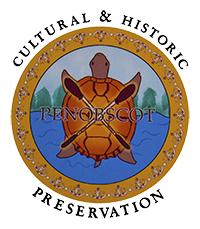
For thousands of years, the Penobscots have relied on the rivers of Maine for food, drinking water, transportation, and many other facets of their culture.
Like Lynne Cherry’s book A River Ran Wild, which provided inspiration for this unit, each lesson examines a phase in the history of the river. Although the unit focuses on the Penobscot River, the heart of Penobscot culture, it can be adapted for any river in Maine.
Lessons: Eras of a River
Creation of the Penobscot River: the Penobscot perspective
Penobscot settlements along the landscape
Village life in the settlements
European culture and the landscape
European settlements along the landscape
The Industrial Revolution and its effects on the river
Pollution and clean up of the river.
The future of the river.
Cover design and wrap up.
The Penobscot Nation Cultural and Historic Preservation Department developed downloadable PowerPoint presentations for each lesson. They can stand alone or be used with other units and other curriculum. For instance, parts of the River unit can be integrated into third grade studies of local communities, fourth grade Maine studies or regions of Maine curriculum, or 7th or 9th grade world geography courses.
The River can also be the basis of a year-long unit in which all lessons about mapping a community, biome studies, and studies of local history and industry are related back to the Penobscot or other rivers.
